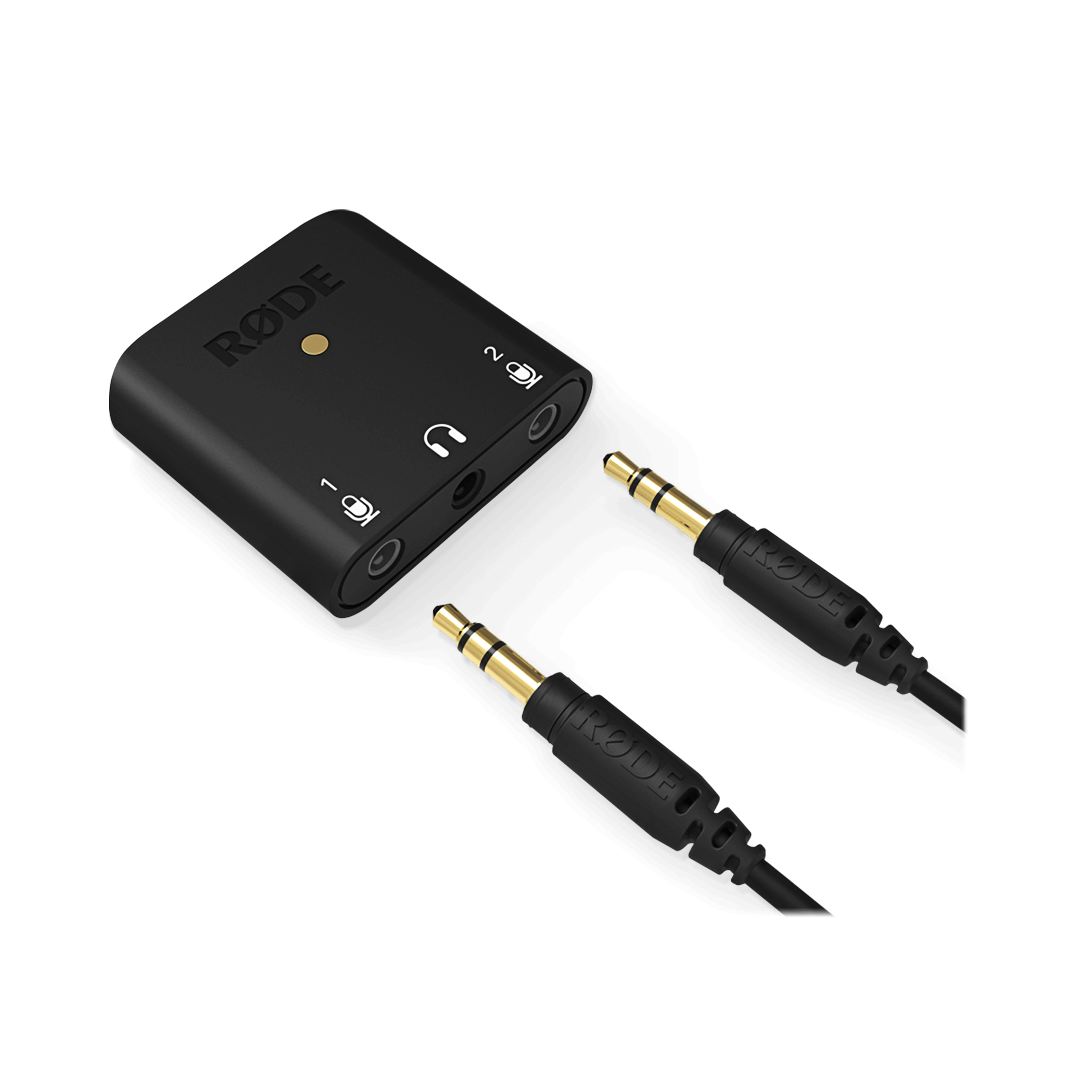AI-Micro
Interfaz de Audio Compacta
El AI-Micro es una interfaz de doble canal ultra compacta para grabar audio de alta calidad en un dispositivo móvil o computadora. Cuenta con dos entradas auto-sensibles para conectar prácticamente cualquier micrófono con una salida de 3.5 mm, monitoreo de auriculares, una salida universal USB para su uso con teléfonos inteligentes, tabletas y computadoras, y compatibilidad con aplicaciones RØDE para un sonido potenciado, el AI-Micro te permite grabar sin límites.
Características clave:
- Interfaz de audio de doble canal ultra compacta para computadoras y dispositivos móviles
- Compatible con prácticamente cualquier micrófono con salida de 3.5 mm, incluyendo RØDE VideoMics, micrófonos de solapa, sistemas inalámbricos y micrófonos estéreo que no requieren alimentación por enchufe
- Entradas auto-sensibles para conectar micrófonos TRS o TRRS
- Salida de auriculares de alta calidad para monitoreo y reproducción de audio sin latencia
- Se conecta sin problemas a computadoras, teléfonos inteligentes y tabletas a través de la salida universal USB (se suministran cables USB-A, USB-C y Lightning)
- Compatible con la suite de aplicaciones RØDE para funciones y características ampliadas, configuración sobre la marcha y grabación de calidad de transmisión en cualquier dispositivo
- Interfaz de audio de doble canal ultra compacta para computadoras y dispositivos móviles
- Compatible con prácticamente cualquier micrófono con salida de 3.5 mm, incluidos RØDE VideoMics, micrófonos de solapa, sistemas inalámbricos y micrófonos estéreo que no requieren alimentación plug-in
- Entradas de detección automática para conectar micrófonos TRS o TRRS
- Salida de auriculares de alta calidad para monitoreo de audio sin latencia y reproducción
- Se conecta sin problemas a computadoras, teléfonos inteligentes y tabletas a través de la salida universal USB (se suministran cables USB-A, USB-C y Lightning)
- Compatible con la suite de aplicaciones RØDE para funciones y características ampliadas, configuración sobre la marcha y grabación de calidad de transmisión en cualquier dispositivo
Audio increíble en cualquier lugar
La AI-Micro te permite capturar audio de alta calidad en tu móvil o computadora con facilidad. Cuenta con dos entradas de 3.5 mm para conectar una amplia gama de micrófonos, tales como los micrófonos VideoMics, de solapa y sistemas inalámbricos de RØDE como el Wireless GO. Cuenta con entradas con detección automática que detectan si se ha conectado un micrófono TRS o TRRS y se adaptan automáticamente para acomodarlo, sin necesidad de adaptadores. La entrada 1 también puede configurarse como una sola entrada TRS estéreo para utilizarla con micrófonos estéreo.
Los preamplificadores de micrófono de alta calidad y la grabación de alta resolución (24 bits/48 kHz) garantizan una captura de audio nítida en cualquier dispositivo, con una salida para audífonos para la monitorización y reproducción de audio sin eco. Ya sea que estés haciendo una entrevista, un podcast, una presentación o una transmisión en vivo, graba audio increíble en cualquier lugar con la AI-Micro.
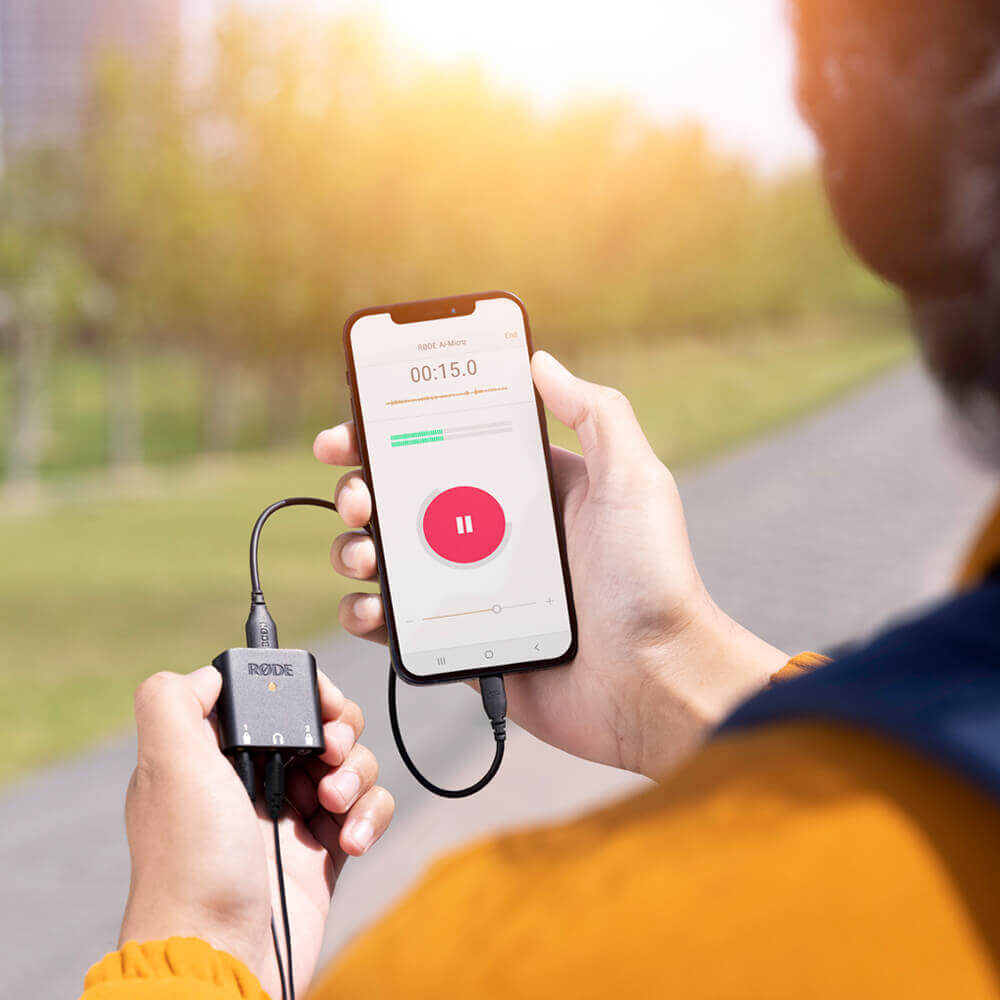
Compatibilidad Universal Con Todos Tus Dispositivos
El AI-Micro se puede conectar sin problemas a todos tus dispositivos a través de su salida universal USB. Se suministra con cables USB-A, USB-C y Lightning, para que puedas comenzar a grabar al instante, y es compatible con Mac, Windows, iOS y dispositivos Android sin necesidad de configuración. Grabar de manera portátil nunca ha sido tan fácil.
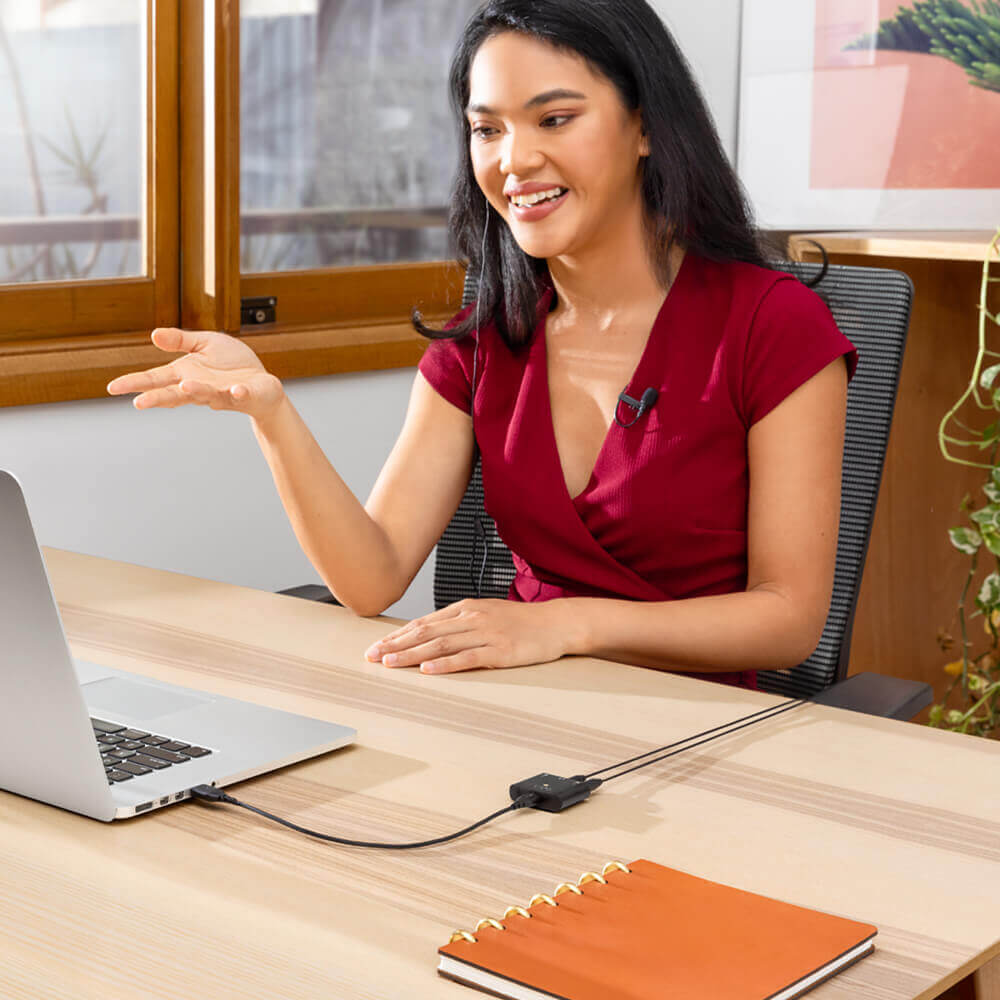
Portabilidad de bolsillo
Con un peso de menos de 20 gramos, el AI-Micro es extremadamente compacto y ligero. Solo necesitas añadir dos micrófonos de solapa y tendrás un conjunto de grabación de calidad de estudio que cabe en tu bolsillo. Perfecto para entrevistas en el campo, podcasting en movimiento y para realizar videollamadas o transmisiones en vivo desde casa.
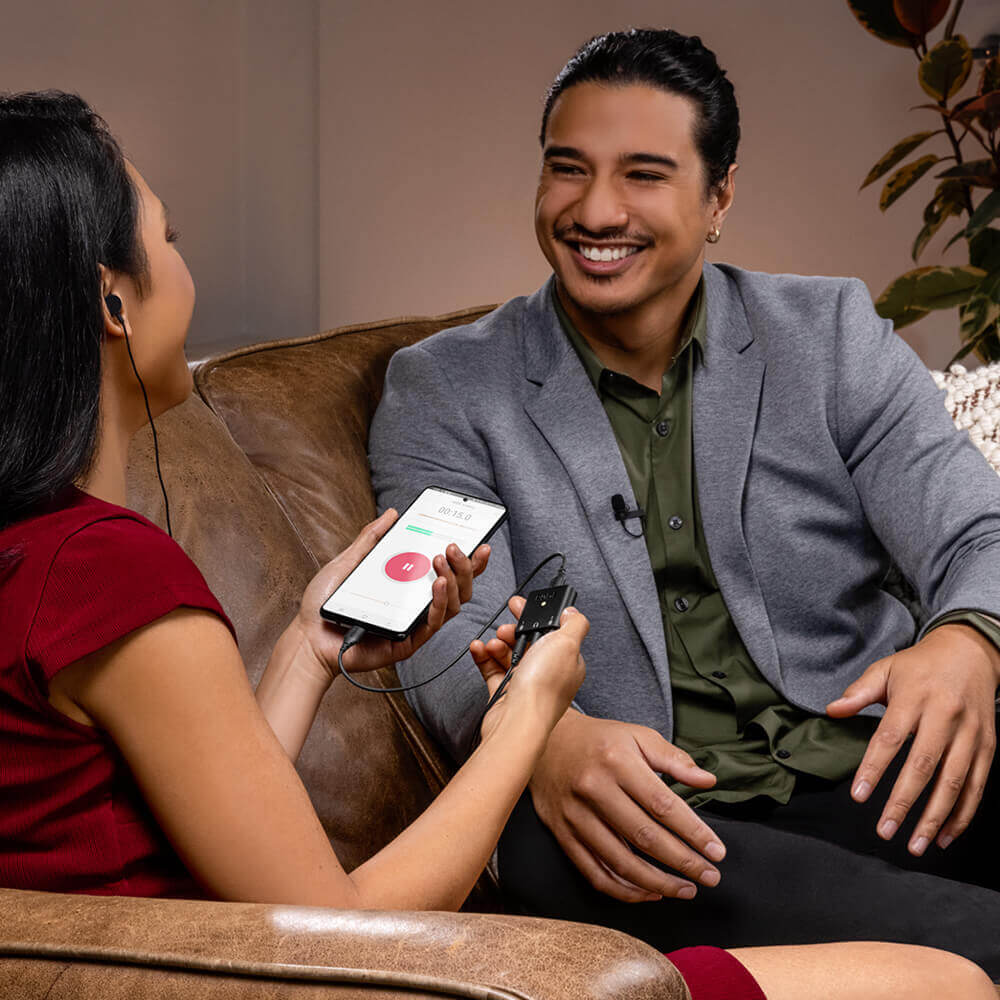
Guía del Usuario de AI-Micro
La Guía del Usuario de AI-Micro explica todo lo que necesitas saber sobre el uso de tu AI-Micro. Esta guía completa abarca desde cómo comenzar hasta la actualización del firmware del dispositivo y cómo acceder a funciones y características ampliadas con la suite de aplicaciones RØDE, que incluye RØDE Connect, RØDE Reporter y RØDE Central.
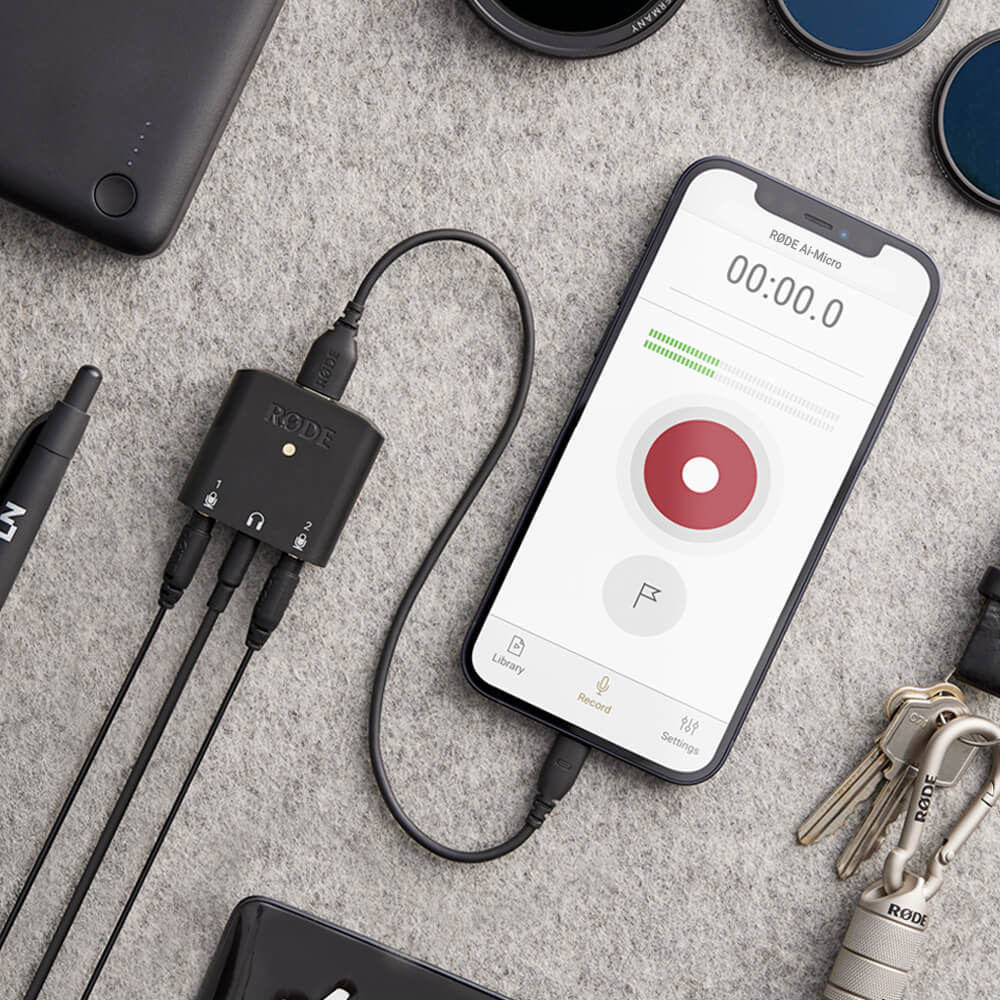
Potencia tu Micrófono
El AI-Micro es compatible con toda la suite de aplicaciones RØDE, ofreciéndote acceso a funciones ampliadas
y funcionalidades, configuración sobre la marcha, grabación de calidad de transmisión en cualquier dispositivo.

Conectar RØDE
Graba podcasts o transmisiones en vivo de calidad profesional en una computadora con tu micrófono de 3.5 mm. Graba con hasta cuatro micrófonos en una computadora. Accede al procesamiento de audio de calidad de estudio con un solo clic, y mucho más.

RØDE Reporter
Graba audio de calidad de transmisión en cualquier lugar usando tu smartphone o tablet, con control total sobre las configuraciones del AI-Micro, una visualización de forma de onda en tiempo real y medidor de nivel, compartición nativa y más.

Central RØDE
Configura tu AI-Micro con tu dispositivo móvil o computadora, incluyendo el ajuste de la ganancia de entrada del micrófono y el nivel de monitoreo de auriculares, activando un filtro de paso alto, y más.
Especificaciones
Preguntas frecuentes
The AI-Micro can be used with iOS and Android smartphones and tablets, and Mac and Windows computers, as long as the device has a USB-A, USB-C or Lightning connector. OS requirements: macOS Big Sur and higher, Windows 10 (Build 19041) and higher, iOS 14 and higher, Android 9.0 and higher.
You can plug virtually any microphone that has a 3.5mm output into the AI-Micro. This includes RØDE VideoMics, lavaliers, wireless systems like the Wireless GO, and stereo microphones that do not require plug-in power. The AI-Micro's microphone inputs are TRS/TRRS auto-sensing, meaning they automatically detect whether a TRS or TRRS microphone is connected and adapt to accommodate either connection type.
While similar in design and concept to the SC6-L, the AI-Micro has a few key updates that make it far more versatile, including a universal USB output for use with Android smartphones and tablets (and iOS devices with a Lightning port like the SC6-L), as well as computers. It has also enhanced inputs for use with a wider range of microphones and is compatible with the RØDE app suite for accessing advanced features, on-the-go configuration, and broadcast-quality recording on any device.
Yes. To connect the AI-Micro to an iOS device with a Lightning port, you need a Lightning Accessory Cable – either the included SC21 cable, or the RØDE SC15 or SC19.
We recommend using the included cables to connect the AI-Micro to your device. If you require a longer cable, there is a selection of different cable types available from the RØDE accessory range. To connect the AI-Micro to an iOS device with a Lightning port, you need either the included SC21 cable, or the RØDE SC15 or SC19.
Check out the AI-Micro User Guide for detailed information on its functions and features.
The input gain for each of the AI-Micro's microphone channels can be adjusted in RØDE Connect, RØDE Central and RØDE Reporter. You can also adjust the input gain using the level control in third-party audio or video apps if they have this feature. If you are using an app without a level control and would like to adjust the input gain, use RØDE Central, as any changes made to the levels in RØDE Connect or RØDE Reporter will not be retained when using another app.
The AI-Micro allows you to configure how the audio from the input channels is routed to the output. There are three different channel modes, ‘Merged’, ‘Split’ and ‘Stereo’, which are suited to different microphone setups.
In ‘Merged’ mode, the input signal is routed to both the left and right channels of the output, which is ideal if you are just using one microphone. In ‘Split’ mode, input 1 is routed to the left channel of the output and input 2 is routed to the right channel, which is ideal if you are using two microphones. ‘Stereo’ mode is ideal when you are using a stereo microphone; the left and right channels of input 1 are routed to the respective channels of the output to ensure you retain the microphone’s stereo image (input 2 is disabled).
You may have direct monitoring deactivated. This can be turned on/off via a computer or mobile device using RØDE Central (note: direct monitoring is activated by default on the AI-Micro).
It is possible to connect a dynamic XLR microphone (or other microphone that does not require phantom power) to the AI-Micro with an appropriate XLR to 3.5mm adaptor. However, we strongly recommend using the RØDE AI-1 interface for connecting XLR microphones to a computer.
To connect a stereo microphone such as the Stereo VideoMic Pro to the AI-Micro, you must plug it into input 1 and use either RODE Central or RODE Reporter apps to set the channel mode to ‘Stereo’. This configures input 1 to be a standard stereo TRS input (and disables input 2).
Note: This function only works for stereo microphones that do not require plug-in power.



